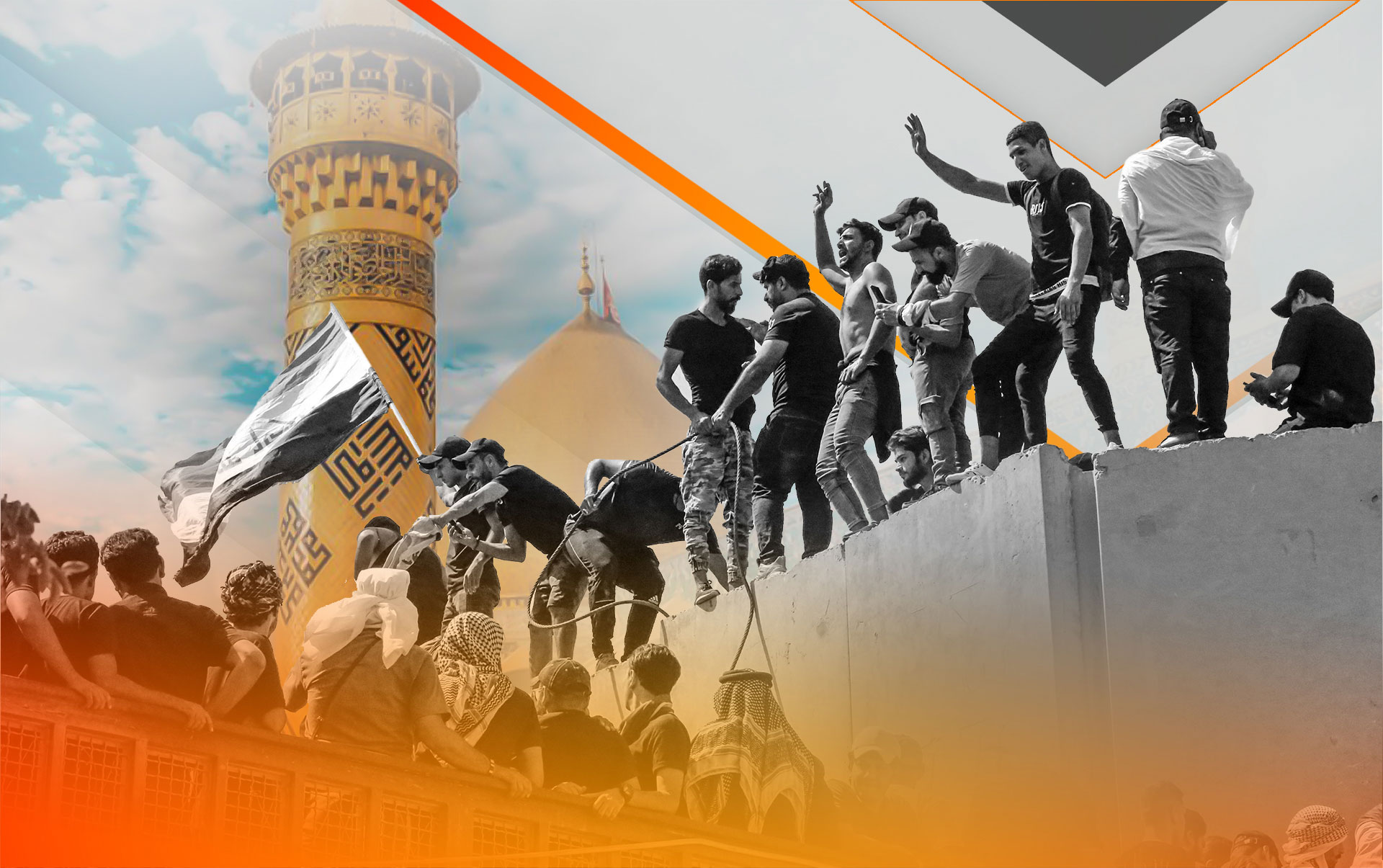Many people are monitoring what will change in Iraqi politics or the internal Shiite conflict after the ceremonies of the “Arbaeen” of Imam Hussein. Even if there was consensus among the politicians and the government was formed or an escalation such as the one we witnessed before Ashura occurs again, the conflict and competition within the Shiite component will continue for several years and will remain an essential element in the region's politics.
What changed from Ashura to the the Arbaeen?
After Barzani and Al-Halbousi's stance on holding an early election and forming a government, the chances of the coordination framework in holding a parliamentary session and forming a government increased.
However, if the demands and interests of Al-Sadr were not guaranteed, would this government be stable? In addition, the existence of consensus among the Iraqi leaders does not end the political crisis in Iraq. Politics in Iraq is witnessing competition for influence, politics, and religion.
On one hand, the second line of the Shiite leadership is in fierce competition to reinforce their political and religious position. On the other hand, the lack of clarity about who will be the reference "Marjaa" or leader after Sistani and Khamenei are factors that keep this conflict.
Currently, there is another attempt by Hadi Al-Amiri to meet with Sadr in Najaf in an attempt to reach a consensus. The success of this initiative is not yet clear, but the meeting will be important if it is held, especially after Sadr's retirement announcement.
This is the fifth time that Sadr has announced his retirement from politics, but this time Sadr has left his Shiite opponents in need of him. The events that occurred in late August showed Sadr as the last opportunity for the Coordination Framework, Iran, and finally for the "marjaa" (Shitte Supreme Leader) to maintain control over the situation in Iraq. Through his speech, Sadr managed to save Iraq from another war starting. Sadr did that within 10 minutes.
What would have happened if Muqtada Al-Sadr was not there? What would have happened if his supporters were not regulating the protest? Naturally, another wave of mass protests similar to the October protest that started in 2019 is expected and will not be controlled. The Arab Spring of 2011 experience may show that demonstrations and mass protests alone are not enough to replace the political system of a country, as seen in Syria and many other countries. But another demonstration like October Demonstrations in Iraq, even if it was eventually suppressed, is more “dangerous” than “the danger” Al-Sadr poses for Shiite politicians!
This is one side and another side comprises the following:
Once more, we are witnessing the return of the role of Najaf Al-Ashraf's "marjaayat" in the internal Shiite conflict, especially after its role in stopping the clashes last month. In addition, in the past few days, during the Friday prayer sermon in Najaf, Sadruddin Qabbanji said that reform should take place through the formation of a strong, impartial, and capable government, not through withdrawal. Qabbanji's words are considered to be a message from Ayatollah Sistani to Sadr. Moreover, the sudden withdrawal of the Marjaa, Kadhim Al-Haeri, and Haeri's criticism of Al-Sadr made Sadr confirm the holiness of the Najaf Marjaa (Sistani), and this will represent an influencing factor in Al-Sadr's future positions.
The tripartite alliance that was formed after the elections is now offering different stances as well. Al-Sadr withdrew from parliament without his allies, and he currently desires to keep Dr. Barham Salih and Mustafa Kadhimi in office. While the KDP has a different opinion about it.
Alongside the pressure and negotiations, the coordination framework with a regional and international desire to form a government made Sadr's allies change their stance. For example, Barzani and Al-Halbousi on the 11th of September announced "the importance of holding early elections after legal preparations and constitutional mechanisms, and that will be after forming a government with broad powers and gathering all the parts in its program." Al-Sadr still insists on dissolving parliament and going to elections through the current government. These changes will be one of the factors that can affect the future of Sadr.
Another crucial point is that the August clashes have shown that there is no other option than moving toward more tensions or offering some kind of consensus, even if not a direct consensus. In the current situation, it is challenging for Al-Sadr to perform anything that could lead to a Shiite civil war.
If we assume that political officials act realistically, Iraq will be calmer after the Arbaeen mourning of Imam Hussian, but sometimes political influencers do not act realistically, so we must note the other scenario.
Another point is that what is happening between the Sadrist movement and the coordination framework is not limited to Iraq. It rather reflects the general situation of Shiite politics in the Middle East. Hezbollah's role declining in Lebanon, the internal political system issue in Iran that culminated in 2009 which continued despite the suppressions, and what is happening in Baghdad are indications of a crisis in the power experience in which the Shiites have an active role. This is a continuation of the wave of crises that have impacted other political systems in the region since 2011. In addition, the current religious authority in Iran and Iraq represents another factor that can at least contain internal Shiite tensions for some time, but any changes in the two references may lead to the return and increase of the crisis.

